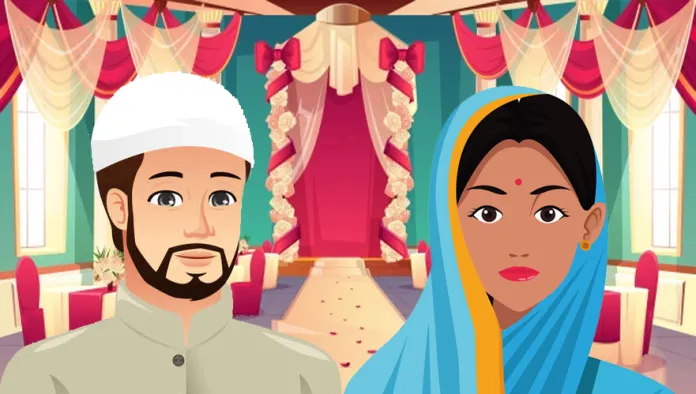Introduction
Technology has revolutionised many aspects of our lives, and traditional matrimony practices are no exception. From the way couples meet to the methods of planning weddings, technology has introduced both challenges and opportunities in the realm of marriage. Here’s an exploration of how technology is reshaping traditional matrimony practices.

1. Changing Courtship Dynamics
Historically, courtship involved face-to-face interactions and family introductions. Today, dating apps and social media have transformed how couples meet and interact. Platforms like Tinder and Bumble allow individuals to connect based on interests and preferences, often leading to more diverse relationships. While this broadens options, it also raises questions about authenticity and the depth of connections.
2. Virtual Introductions and Arranged Marriages
In cultures where arranged marriages are prevalent, technology has enabled families to connect more efficiently. Online matchmaking services and matrimonial websites allow families to browse profiles, share information, and facilitate introductions across geographic boundaries. This convenience can help families find suitable matches, but it can also introduce challenges regarding the influence of technology over traditional values.

3. Planning Weddings with Ease
Wedding planning has become more streamlined with technology. Couples can now access a wealth of resources online, from vendor reviews to budgeting tools. Websites and apps like WeddingWire and The Knot provide checklists, timelines, and inspiration, making the planning process less daunting. However, this convenience can sometimes lead to information overload, making it difficult for couples to prioritize their preferences.
4. Social Media and Cultural Representation
Social media plays a significant role in how weddings are celebrated and shared. Platforms like Instagram and Pinterest have become popular for showcasing wedding ideas, trends, and personal stories. While this can enhance creativity and personalization, it can also create pressure to conform to certain standards, potentially overshadowing the couple’s unique vision.

5. Long-Distance Relationships and Virtual Celebrations
Technology has made it easier for couples in long-distance relationships to maintain their bonds through video calls, instant messaging, and social media. Virtual celebrations, such as online engagement parties or weddings, have gained traction, especially during the pandemic. While these options offer flexibility, they may lack the intimacy and communal experience of traditional ceremonies.
6. Changing Attitudes Towards Commitment
The digital age has influenced attitudes towards marriage and commitment. With easy access to potential partners, some individuals may delay marriage or view it as less critical than previous generations. This shift prompts discussions about the meaning of commitment in a world where options seem limitless.

7. Preserving Traditions in a Modern Context
While technology introduces new practices, many couples find ways to blend modernity with tradition. Live streaming weddings allows loved ones who cannot attend in person to participate. Couples can also create digital keepsakes, like wedding websites, that preserve the essence of traditional customs while embracing a contemporary format.
Conclusion
Technology has undeniably transformed traditional matrimony practices, offering both benefits and challenges. As couples navigate this evolving landscape, they must balance modern conveniences with the values and traditions that matter most to them. Embracing technology while honoring heritage can lead to enriched relationships and memorable celebrations. Ultimately, it’s about finding a harmonious blend that resonates with each couple’s unique journey.

